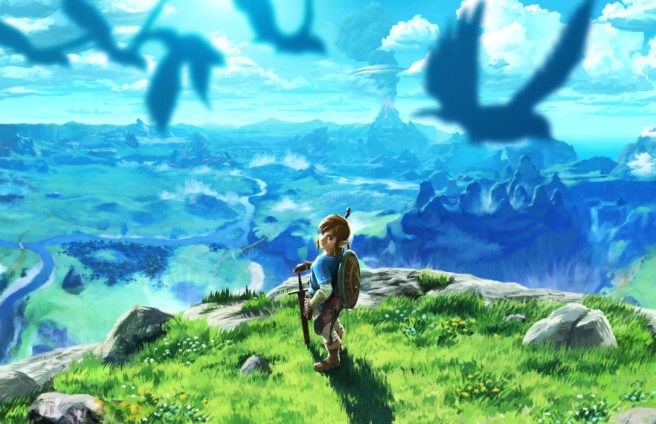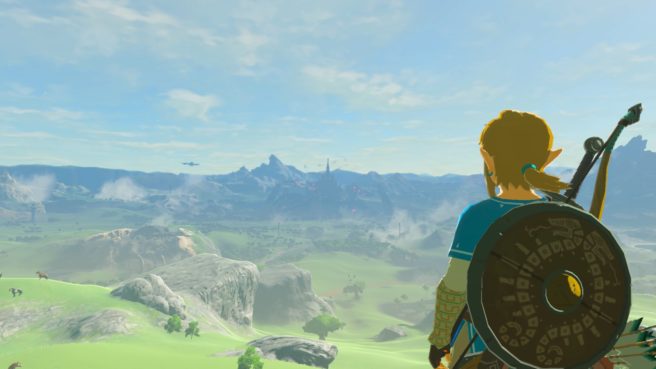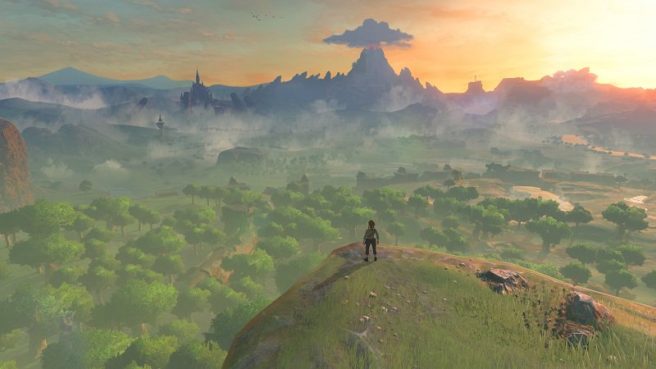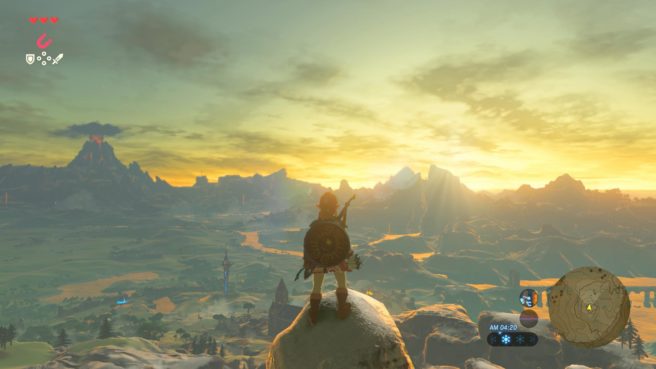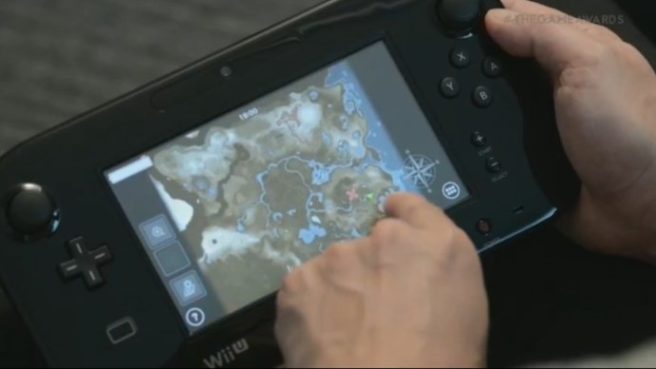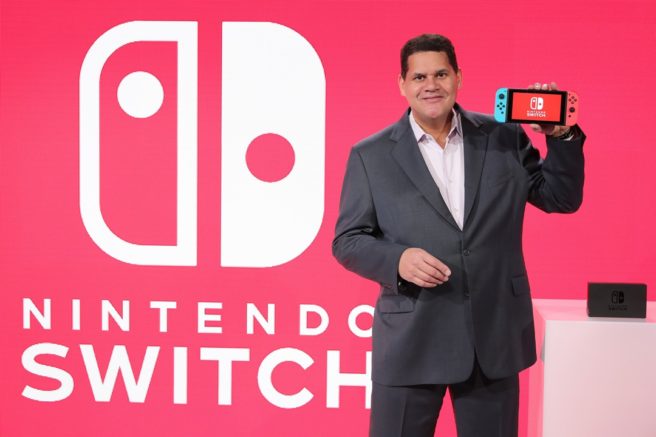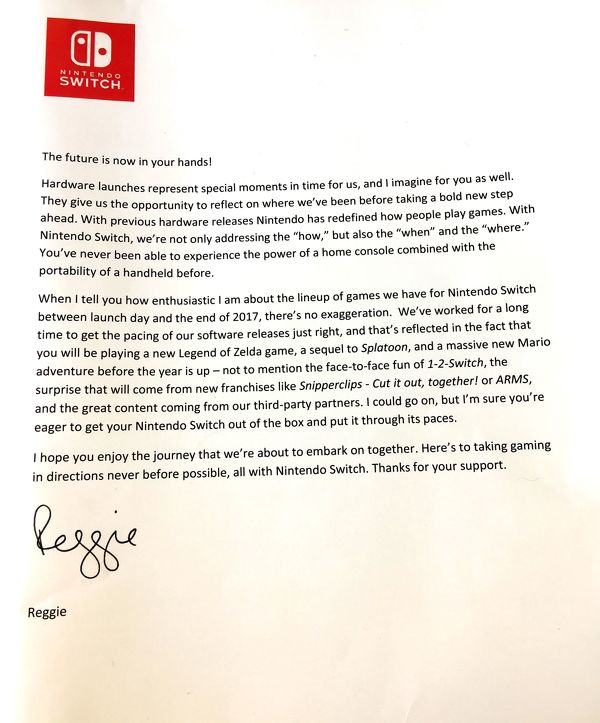Zelda: Breath of the Wild director inspired by Minecraft and Terraria, talks developing for Switch
Posted on 7 years ago by Brian(@NE_Brian) in News, Switch, Wii U | 14 Comments
In the past, Zelda producer Eiji Aonuma has spoken about being inspired by games such as The Elder Scrolls V: Skyrim in creating Breath of the Wild. But what about the game’s director, Hidemaro Fujibayashi?
Fujibayashi cited two games while speaking with EDGE this month about games that inspired him: Minecraft and Terraria. He told the magazine:
“I was rather inspired by playing Minecraft and Terraria. I was able to learn from the gameplay and the possibilities found in. I could learn from the sense of adventure, exploration and how it inspired curiosity.”
As for real life inspiration, Fujibayashi is involved with an adventure club with other Nintendo staff in which they participate in outdoor activities:
Zelda: Breath of the Wild team on dev approach, difficulty, speedrunners, concept art, Shrines, bugs, and more
Posted on 7 years ago by Brian(@NE_Brian) in News, Switch, Wii U | 9 Comments
The Verge recently chatted with Zelda: Breath of the Wild director Hidemaro Fujibayashi, art director Satoru Takizawa, and technical director Takuhiro Dohta. Tons of topics were discussed in the new interview. Among them include how the team approached development, the game’s difficulty, speedrunning, the crazy concept, designing Shrines, and making the experience as bug free as possible.
We’ve rounded up notable excerpts from the interview below. You can read the full discussion on The Verge here.
Zelda: Breath of the Wild director on how the game initially came together, Miyamoto climbing trees in the prototype
Posted on 7 years ago by Brian(@NE_Brian) in News, Switch, Wii U | 6 Comments
The concept for Zelda: Breath of the Wild began with Shigeru Miyamoto and series producer Eiji Aonuma asking what would players would be able to do in the new game. Hidemaro Fujibayashi, who became the project’s director, responded by saying you could do everything.
Fujibayashi told Kotaku:
“But I had to sell it to them. How we’re going to make this happen. And I felt like the best way to convey this idea to them was to show them that you could climb walls.”
Work on Breath of the Wild began with a prototype. The team created a starting area with a small field and trees, along with rupees hidden throughout. Fujibayashi describes how Miyamoto played the demo:
Zelda: Breath of the Wild’s map is based on Kyoto
Posted on 7 years ago by Brian(@NE_Brian) in News, Switch, Wii U | 0 comments
The Legend of Zelda: Breath of the Wild’s huge map is based on Kyoto, Japan. That’s according to director Hidemaro Fujibayashi, who revealed the information while speaking with The Verge.
Fujibayashi told the site:
“When I first started looking at this game, I had Link in an empty game field and I would just walk around and try to map out and get a feel for the distance and where landmarks should be. What helped me with this was my hometown, Kyoto. I took a map of Kyoto and overlaid it on the game world, and I tried to imagine going to places that I know in Kyoto. I’d think ‘It takes this much time to get from point A to point B, so how does that translate to the game?’ And that’s how we started mapping out the world in Breath of the Wild.”
Fujibayashi added that using Kyoto as a base was helpful during development since developers were familiar with the region:
Zelda: Breath of the Wild director on cutting Wii U touch features
Posted on 7 years ago by Brian(@NE_Brian) in News, Switch, Wii U | 77 Comments
Before the Switch version of Zelda: Breath of the Wild, the game was planned to have some touch features on the Wii U GamePad. Ultimately, those ideas were scrapped. The GamePad simply tells players that they can tap on the controller to enable off-TV play.
Zelda: Breath of the Wild director Hidemaro Fujibayashi recently chatted with IGN about the decision to cut the game’s touch features on Wii U. Once Switch was brought in and tests were done, Nintendo “noticed looking back and forth between the GamePad and the screen actually took a little something away from this type of Zelda game.”
Fujibayashi’s full comments are below.
Zelda: Breath of the Wild director on breaking series conventions, developing the world, more
Posted on 7 years ago by Brian(@NE_Brian) in News, Switch, Wii U | 46 Comments
Over the past couple of weeks, Famitsu and 4Gamer both conducted interviews with The Legend of Zelda: Breath of the Wild director Hidemaro Fujibayashi. A lot of what was said has been covered extensively in previous interviews with Shigeru Miyamoto and series producer Eiji Aonua, but there were still some noteworthy excerpts. This was also one of the first times that we actually heard from Fujibayashi about the game.
According to Fujibayashi, the developers’ main goal was to break conventions, but they weren’t sure how far they should go to do so. During development, they took a look at what was core to Zelda games, and decided it was the sense of relief you feel after solving a puzzle. So with that as a base, they tried bringing dungeon gameplay to the field, and field gameplay to the dungeons. Puzzles were created with certain solutions in mind, but left open to the possibility of being solved by using other methods. They tried to fix the parts of puzzle-solving people found boring while keeping the interesting parts intact, and changed anything they saw as “standard” to be “nonstandard.”
Messages from Reggie, Shibata, Zelda: Breath of the Wild’s director from Switch’s media kit
Posted on 7 years ago by Brian(@NE_Brian) in News, Switch | 12 Comments
Included with the Switch media kits are special messages from Nintendo of America president Reggie Fils-Aime, Nintendo of Europe president Satoru Shibata, and Zelda: Breath of the Wild director Hidemaro Fujibayashi.
First, here’s a look at Reggie’s message:
Next, here’s the letter from Nintendo of Europe president Satoru Shibata:
